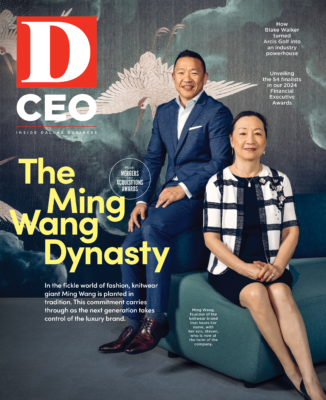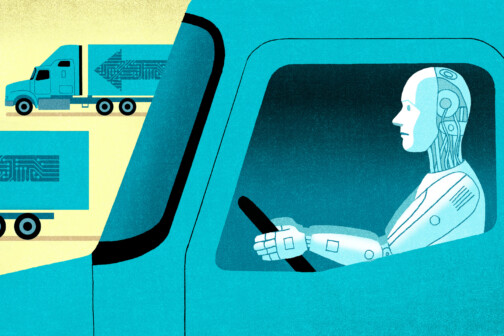Within the next three years, generative artificial intelligence is expected to be used in more than 80 percent of mergers or acquisitions, according to a study conducted by Bain & Co. For the most part, this won’t involve the ChatGPTs or the Copilots of the world but proprietary models built by computer scientists.
Currently, just 16 percent of mergers or acquisitions involve the use of generative AI. But early adopters are beginning to use models that are built in-house or by contracted programmers to source deals and sift through thousands of legal documents in minutes. Developers can create most models in just a couple of days.
And generative AI is accelerating at a pace we’ve never seen before in the tech space. “Knowledge work is being replaced by generative AI,” says Skip Howard, CEO of computer vision and AI company Spacee. “It’s not there today, but it’s moving so fast it will literally be there tomorrow.”
The marketplace will begin to see these tools emerge within the year, but how they’re regulated remains to be determined. “Regulations on how to responsibly use AI is still being ironed out on the state and federal levels,” Howard says. “All it’s going to take is one lawsuit from one investor claiming they’re defrauded and everything will change.
“I think regulation is inevitable because that’s what we do,” Howard continues. “We always regulate something, but I wish we didn’t. Texas is a hell of a lot more lenient than the rest of the country, but even Texas is looking at how to regulate AI. I think it’s great to have the conversations, as long as we proceed with caution.”
After inputting datasets into these proprietary tools, generative AI can produce a list of potential public and private merger or acquisition targets for the sourcing company. The easiest way to sort the massive data sets is by assigning a score to each company. The higher the score, the more likely the merger or acquisition will be successful.
“Sourcing companies is relatively risk-free,” Howard says. “And I’ve already seen that work really well. But it always has to be audited by a human. AI can hallucinate. AI can certainly give companies the wrong information, but present it as accurate. It doesn’t even realize it could be wrong. So, any new process involving generative AI needs to involve human verification.”
These models, which are beginning to pop up in the market, can also run simulations to measure financial performance after integration. During the deal process, these AI models can read through all the 10-Qs and 10-Ks and feed all of that into a data room to help execute the due diligence process that is typically done manually. Models can be built with access to financial documents for every publicly traded company, but financial documents from private companies must be manually input.
Many companies, though, are cautious about feeding confidential information into generative AI models, even if the tool is proprietary. “Clients are still very cautious of the use of AI because of confidentiality concerns,” says private equity partner Scott Parel, co-managing partner for Sidley Austin’s Dallas office.
Taking it a step further, businesses traditionally have an army of attorneys and analysts—small or large, depending on the acquisition size—reading thousands of documents to create an encyclopedia from the financial data supplied by the two merging companies. But when an executive has a question about the deal, perfectly recalling all of that information instantaneously, even for a massive team of lawyers and analysts, is impossible for the human brain.
However, “generative AI has perfect recall,” says Hank Olken, a local computer scientist and COO of consulting firm Highwire Ventures. Moreover, building a chatbot into that data room is the simplest of features for a developer to input. Ask it a question, and the answer is immediately available.
“The reality is generative AI is coming for a lot of people’s jobs, particularly attorneys’ jobs,” says Olken, a self-described techno-optimist. “We’re talking millions and millions of dollars saved in legal fees to do a job no human can realistically do.
“Frankly, I would much rather rely on generative AI with some error rate, and account for that, than a law associate who has been up for 16 hours reading documents. In terms of error rate, their cognitive computing ability to do a repetitive manual task is just incomparable to a machine.”
From a lawyer’s perspective, though, Parel believes AI creates more problems than it solves. “There’s certainly potential for erosion in the legal field as a result of generative AI—fewer attorneys and fewer hours,” he says. “And we’re all thinking about what might be taken out of the equation, what models might be built in a way that people could justifiably rely on that or what application coming down the road could potentially eliminate some part of a transaction. It’s things like document review on the litigation side and due diligence on the M&A side that are steps that are perceived as being more at risk.
“But for every issue AI might solve, I think it creates three to four more issues—maybe more,” Parel continues. “We’re already seeing an uptick in the need for legal work on AI litigation. It’s creating uncertainties in the IP world, it’s creating uncertainties in the data privacy sphere, and it’s going to create quite a bit of work in the regulatory area.”
2023 was a slower year for M&A activity, largely due to inflation. But with improved rates, 2024 is set to be better. Can generative AI, which has already proven to work faster than humans on many tasks, act as a remedy to spur deal acceleration, effectively turning around a stalled or negative market?
“It’s hard to imagine a single thing really counter acting a whole host of different macro- and micro-economic pressures on the market,” Parel says. “Its hard for me to see technology combating inflation, interest rates, geopolitical risks, or an election year.”
Olken opposes: “One of the best combatants to inflation is technological innovation—it is inherently deflationary,” the computer scientist says. “Generative AI can absolutely spur M&A activity in a slow cycle.”
Author








